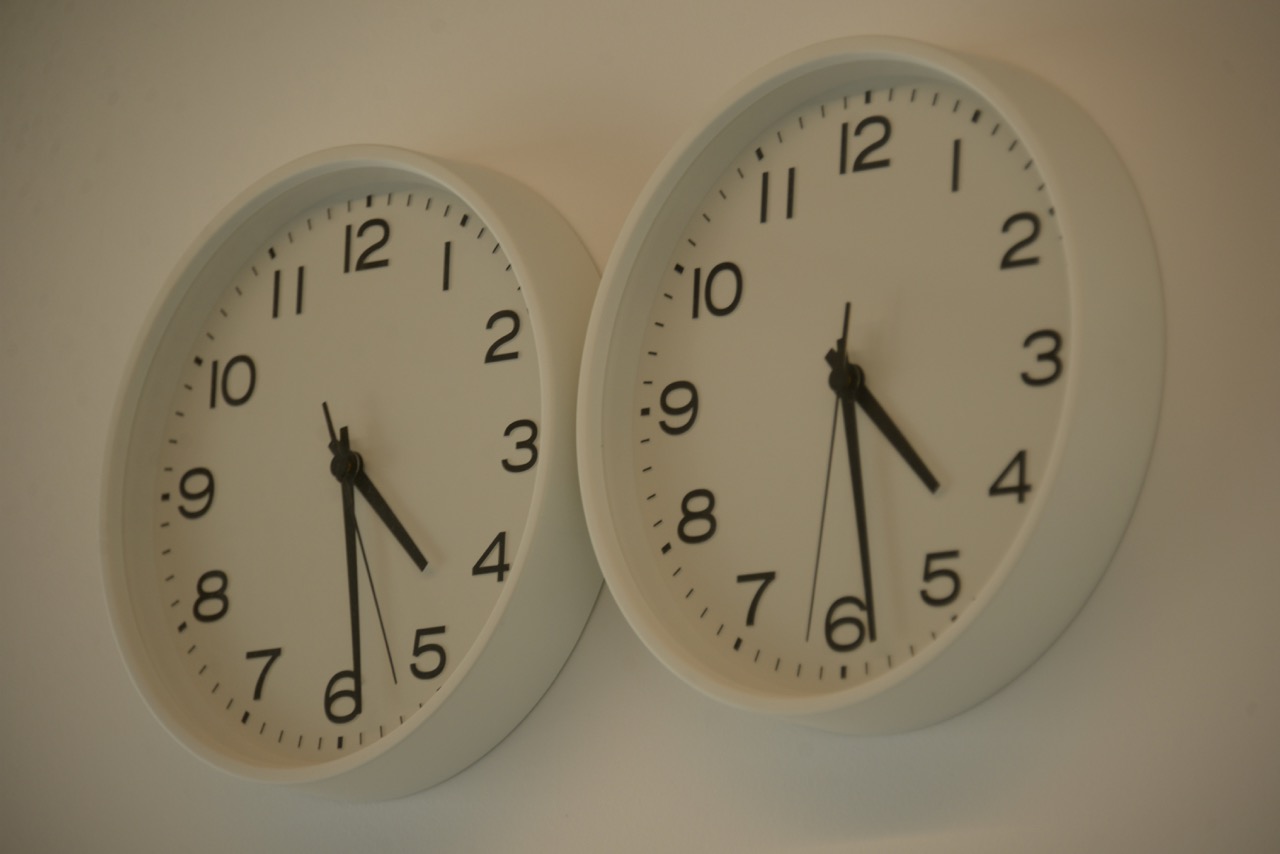A Friend
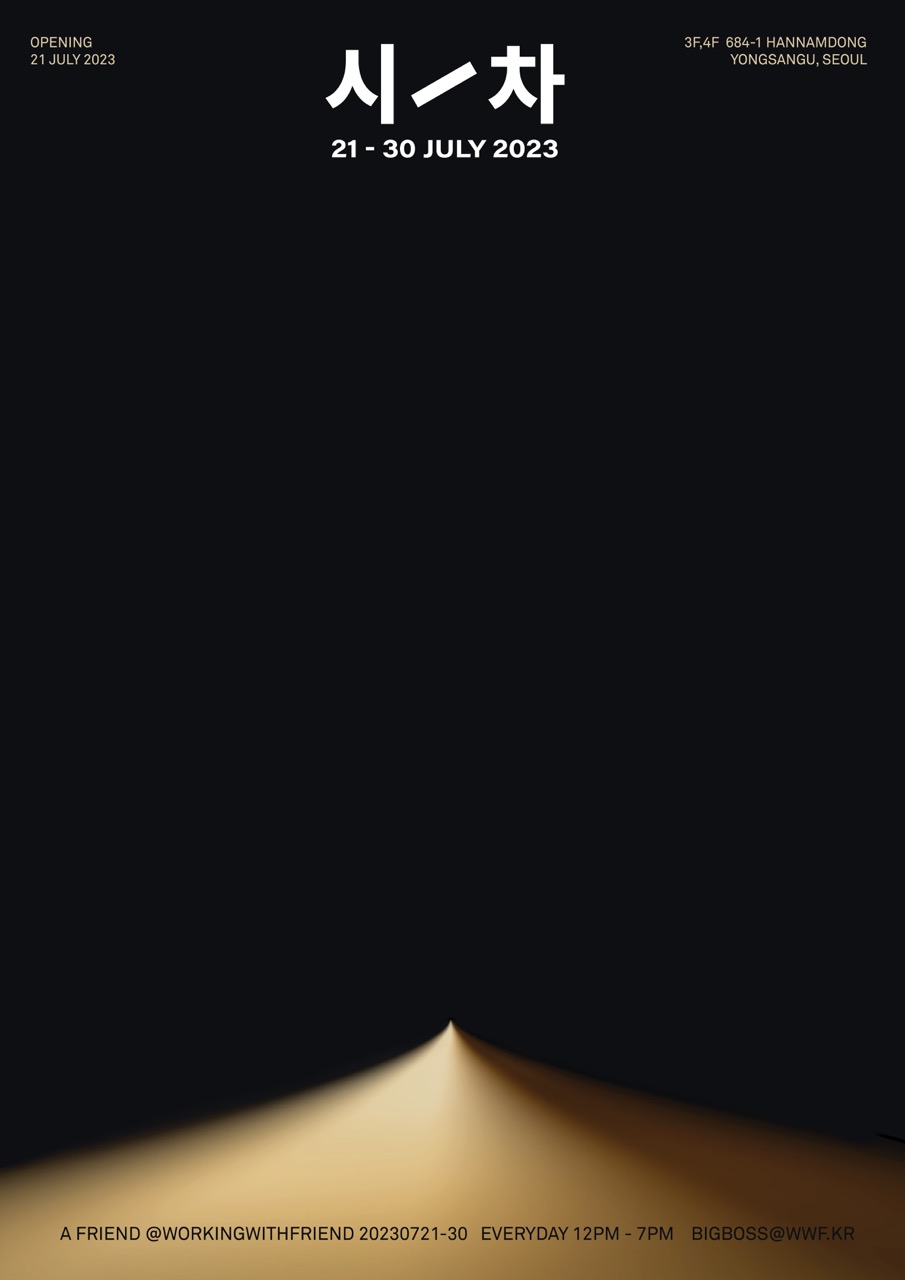
시/차
Time/Perspectives
2023.7.21-7.30
The concept of temporal differential can be viewed through two lenses: Time and Perspectives. We can ask ourselves how this concept work at this moment in our lives. Even the so-called "Ultra-Contemporary" works of young artists will eventually become relics of the past. The abundance of texts, vast scales, variable installations, and concepts bring forth vivid emotions and unexplored discourses of our contemporaneity. However, the range and visibility of these diverse works can also be overwhelming; it would be almost impossible to understand without any notes or writing relating to the work. These works, brimming with enigmatic arrangements, demand attention. Have we not found ourselves compelled to derive meaning, driven or forced either by a sense of obligation to feel or the desire to project intellectual prowess, while wandering through galleries and art museums? Were there moments when we felt somewhat naive upon going to a museum? Certainly, not all the works on display will yield immediate comprehension. Yet, with knowledge of their contextual nuances and historical backdrop, our appreciation can be heightened. Therefore, succinct captions and artist statements have been prepared. These works predominantly comprise Korean modern and contemporary artists from the 1960s to the 1980s. What truly defines "Contemporary"? There's a saying, "History is a collection of incorrect answers that we can look back at.". This humble compilation serves as our own catalogue of "incorrect answers", which, for some, epitomizes the contemporary and the present. Undoubtedly, within these fallacies, we can unearth discoveries, acquire knowledge, and undergo personal growth. Here and now, we may uncover the beauty and teachings that eluded us in bygone days. Temporal differential forever persists, as it always has. What significance does it hold for those born in the 1980s, 1990s, 2000s, and to those living in the year 2023, to appreciate these relics of the past? And why especially within the intimate confines of a modest gallery nestled in the heart of a trendy neighborhood in Hannam-dong? Here’s curated selection of works from the multitude of bygone artists that bestow upon us tales and aesthetic marvels, tailored for the vibrant youth of 2023. It would be of an importance for these forgotten works to be of a relevance to the present youth through their story. It is said: "All masterpieces approach us in the present tense."
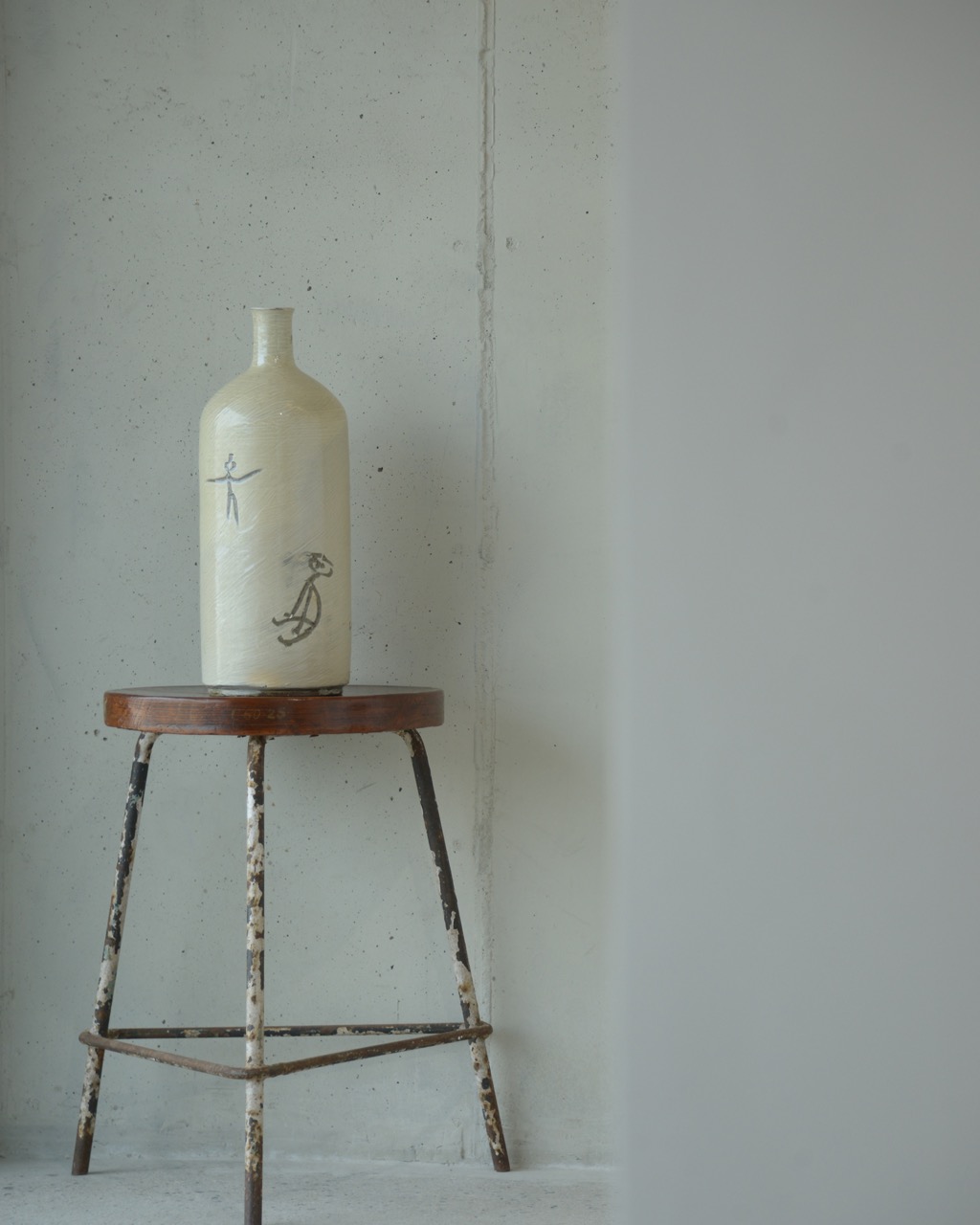
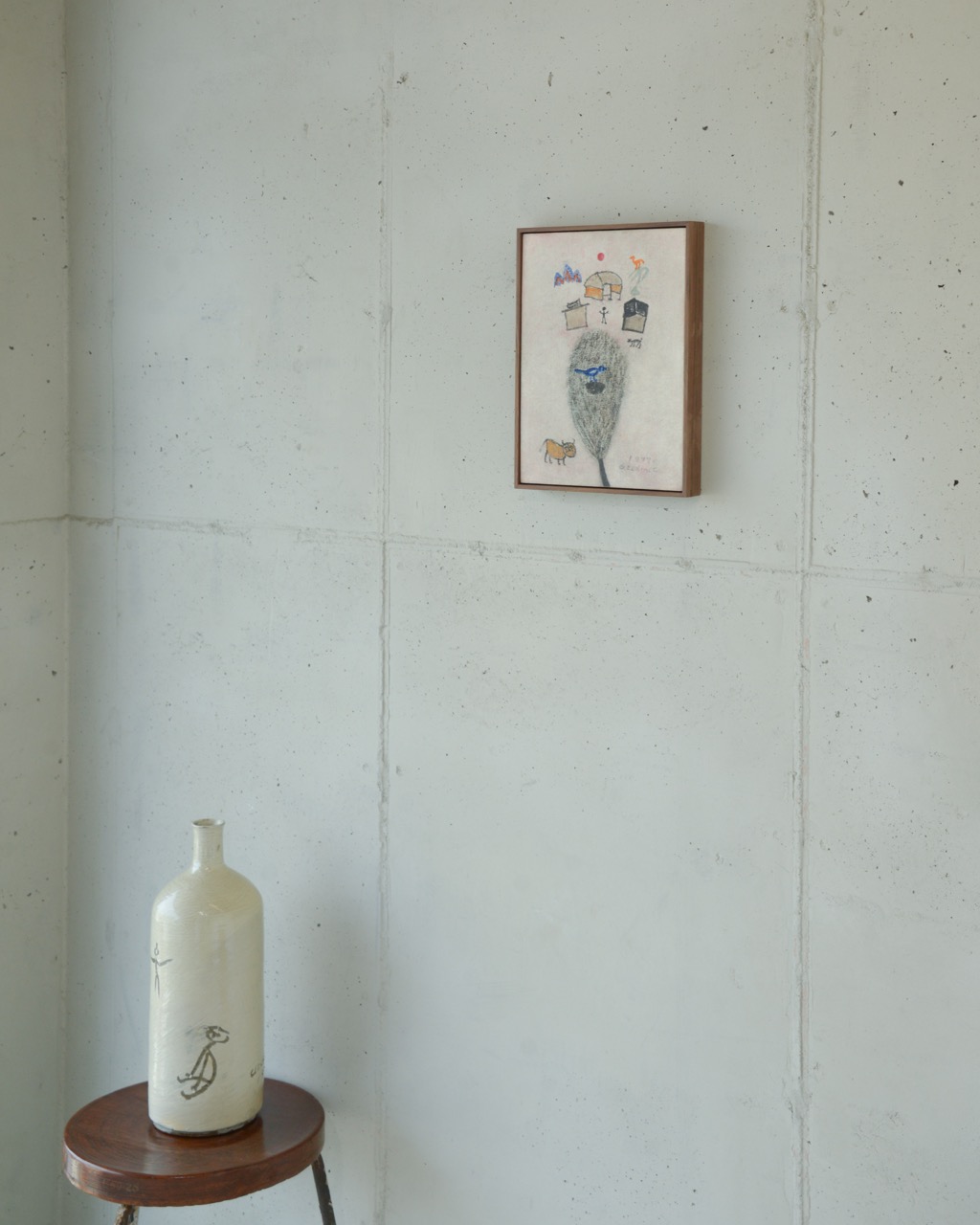
Chang UcChin, ﹤Untitled﹥, oil on canvas, 1977 Pierre Jeanneret, “Stool with Triangle Base”, teak with metal, ca.1960
・ Chang UcChin(b. 1917) A painter who deeply loved alcohol and family, so much so that his paintings seem to resonate with the scent of alcohol. Due to his childlike style, some may mistake his works for those of a child, but in fact, he established a distinctive style through self-exploration, using materials like tissues and turpentine (in fact, young children seem to adore his paintings). Throughout his life, he persisted in creating small-scale works, likely driven by an inherent sensibility. Despite their small canvas size, one can sense their unique composition, rhythm, and architectural structure. He, too, is a contemporary artist who pioneered between Eastern and Western painting. These works were created during his short stay in Myeongnyun-dong, Seoul.
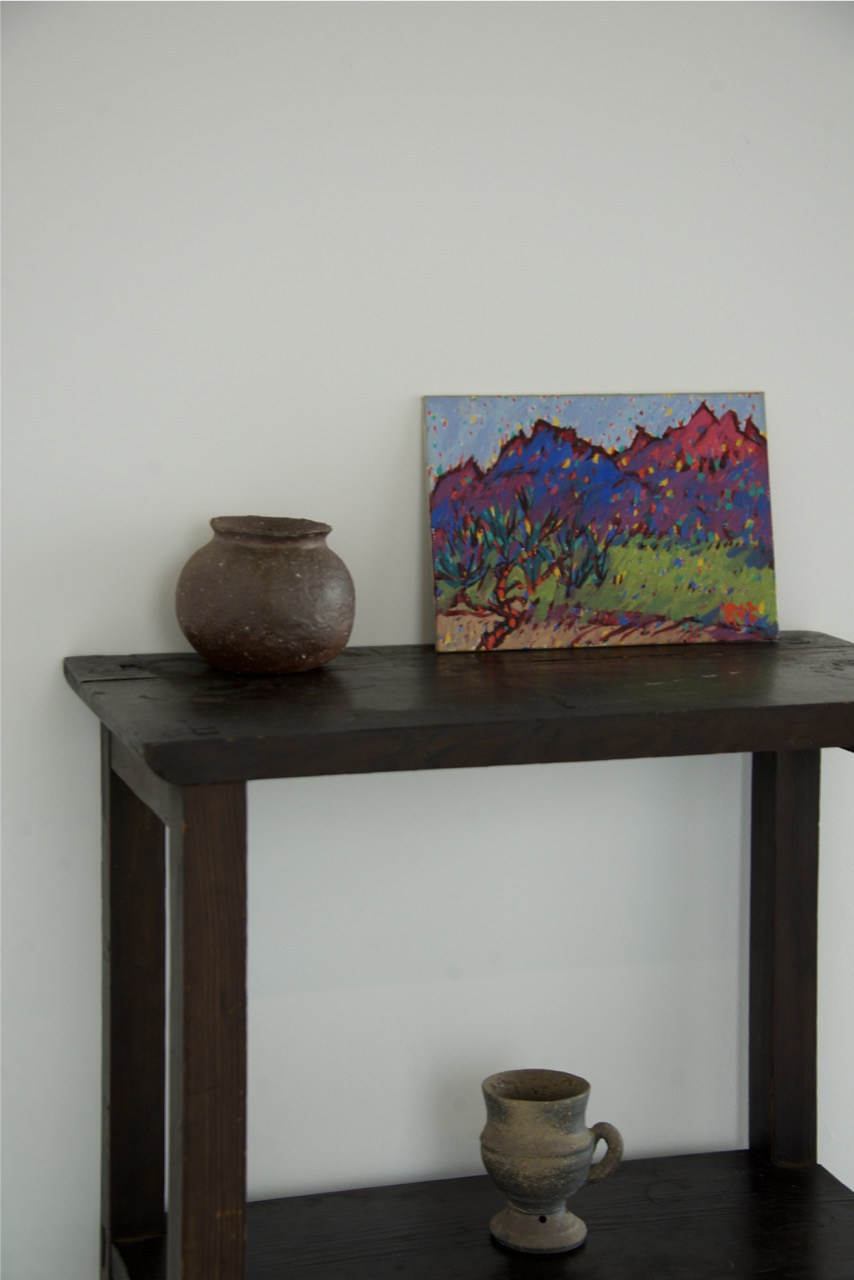
Lee Daiwon, ﹤Mountain﹥, oil on hardboard, 1984
・ Kang SeHwang(b. 1713) From the era known as the cultural Renaissance of the Joseon Dynasty, starting from the reign of King Yeongjo to King Jeongjo, Kang SeHwang served as the head of Joseon Academy and was also the mentor of the Kim HongDo. He epitomizes the essence of "shi-seo-hwa" (poem, calligraphy, and painting harmoniously combined). Remarkably, all three generations of his family attained esteemed positions in the government, establishing an illustrious legacy as a "three-generation noble lineage" - a distinction bestowed upon only about five families throughout the entire Joseon. While it may seem like a life of fortunate circumstances, but he faced hardships during his youth, living as a wanderer in Ansan, Gyeonggi. Only upon reaching the age of sixty did he ascend to an official position. Throughout his lifetime, he cultivated the next generation of artists, providing insightful critiques on numerous paintings and leaving behind an extensive body of work. He even incorporated Western chiaroscuro techniques into his artistry. Among his creations, delicate and orphaned plum blossoms stand out, accompanied by poetic verses dedicated to their beauty. ・ Lee DaiWon(b. 1921) A self-taught artist like Park SooKeun, known as the "Painter of Happiness" for his unique and lively use of beautiful colors and brushwork. However, he couldn't erase the memories of clearing corpses during the Korean War, a confession that lingers in his mind. He operated the first art gallery, the "Bando Gallery," at the Bando Hotel and had a deep affection for Park SooKeun. He purchased a farm in Paju and extensively depicted the farm, orchards, mountains, and more using the pointillism technique. Yet, if you look at his early works, you can see traces of intense contemplation between Eastern and Western painting techniques. Perhaps he, like Yoon HyungKeun, found his own realm between Eastern and Western art, though their styles may be vastly different.


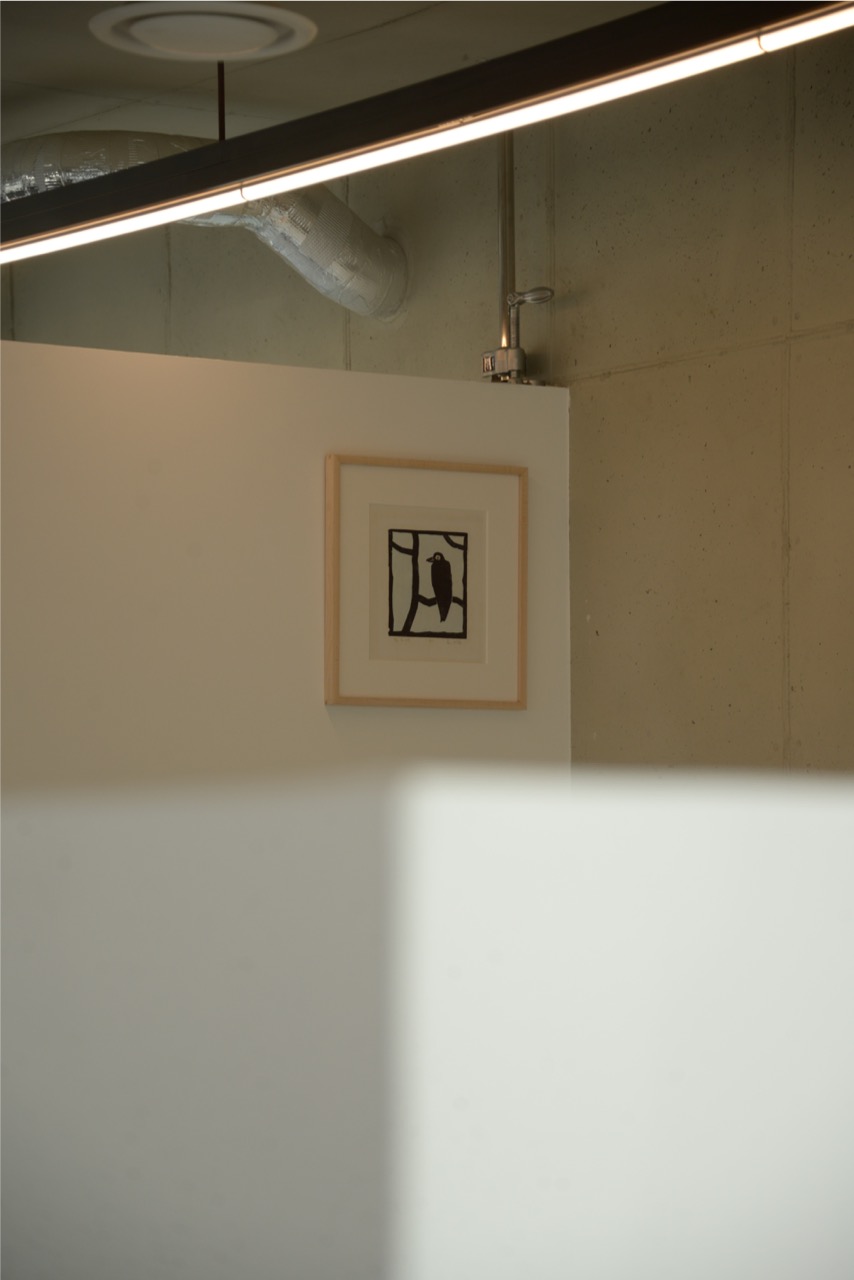
Choi Byungso, ﹤TIME﹥, ballpoint pen and pencil on newspaper
Oh Yoon, ﹤Black Bird﹥, woodcut print and color on Korean paper, 1980
・ Han Youngsoo(b. 1933) A photographer who captured many scenes of Seoul in the 1950s. Even now, his works are incredibly refined, not imposing any particular emotions upon viewers. This piece features a wall in Myeongdong in the 1950s, capturing both men and women. Despite the aftermath of war, the lives of young men and women continued. Looking at his photographs, numerous question marks arise, like "How were such clothings possible back then?" or "How were such camera angles possible?" How different is the Seoul of the 1950s, an era we haven't experienced, from our perspective in 2023? ・ Choi ByungSo(b. 1943) He is renowned for his repetitive practice of erasing newspapers with pens and pencils. Some argue that his monochromatic works are related to 'Dansaekhwa (so-called Korean Monochrome painting)', but perhaps the methodologies differ. He has also delved into experimental installation works in the past. It would be interesting to imagine the thoughts that crossed his mind as he erased newspapers or magazines, contemplating"Time" or propositions. ・ Oh Yoon(b. 1956) He was a representative figure of 'Minjung art' in the 1980s, showcasing a lively blend of modernity and tradition in his woodblock prints. He had a deep interest in the social role of art and had been researching folk paintings, Buddhist paintings, traditional dances, and more since his college days. He passed away at the age of 42. His works are mostly sharp and vibrant, yet this unique little black bird seems to watch over everyone with a smile from the highest corner of the exhibition hall. If you keep looking, you might even make eye contact with it.
・ Park SooKeun(b. 1914) He is a self-taught artist who achieved mastery. His unique style, resembling basaltic rocks and employing distinctive materials, sets him apart as a pioneer. The simplified lines, compositions, and local backgrounds contributed to his popularity among Westerners during his lifetime (perhaps they found his paintings not as modern as they perceived them to be). The landscapes in his works reflect the surroundings of Changsin-dong, Korea, where he lived. Don't they seem to grow from concrete walls, like living paintings? Though small in size, they possess a remarkable ability to dominate space. Upon closer inspection, one can discover layers of overlapping blues and yellows. "I hold a profoundly ordinary view of art, believing that I should depict the goodness and sincerity of humans."
・ Son SangKi(b. 1949) At the age of 39, he passed away. His frail body was further weakened by a childhood illness. With only one-third of the lung capacity compared to others, he struggled to paint in a small, cramped room in Ahhyeon-dong, Korea. As a result, the redevelopment of the surroundings of his studio, capturing Seoul's landscape in the 1980s, features pale and gray walls drawn quite tall. Perhaps because he saw them from a lower perspective. Despite his physical challenges, he did not lose hope, and in his works, we can glimpse a peculiar sense of hope, lyricism, and yearning for spring, as seen in his painting titled 'Spring in the Alley' and the pink touches. In his notes, he expresses his dislike for artists who paint oranges under air conditioners, which might possibly refer to certain artists like To SangBong, who were considered aristocratic painters, but we can't be sure. This time, how about looking at his works from a higher perspective, like the towering cement walls of Ahhyeon-dong he gazed upon throughout his life? "Seoul - a city of obstacles / Overcrowded city to me / Overpasses, underground passages, wide intersections, and noise / The biting cold in the winter / Expressionless faces of rushing people... / The struggles of all individuals like me, it must be..."
・ Paek YongSu(b. 1922) He was a member of the first abstract art group in Korea called 'New Realism Movement', alongside Kim Whanki, Lee JungSeop, and Chang UcChin. Among them, he lived the longest, reaching the age of 96. Elements of the Shin Sa-im-dang group can be observed in his paintings. His works are characterized by clear colors and restrained compositions. He often depicted the beloved landscapes of his family in a simplified manner.
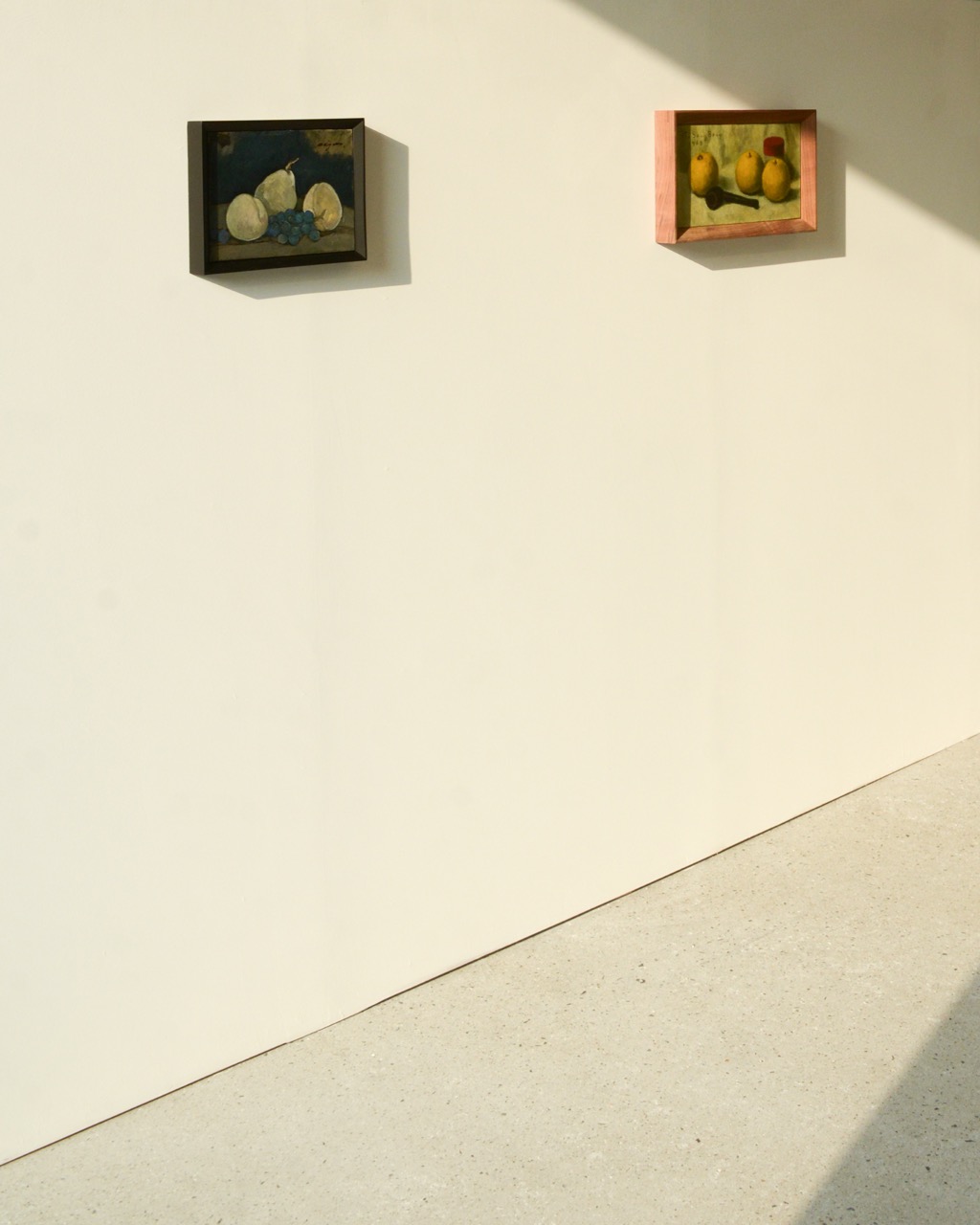
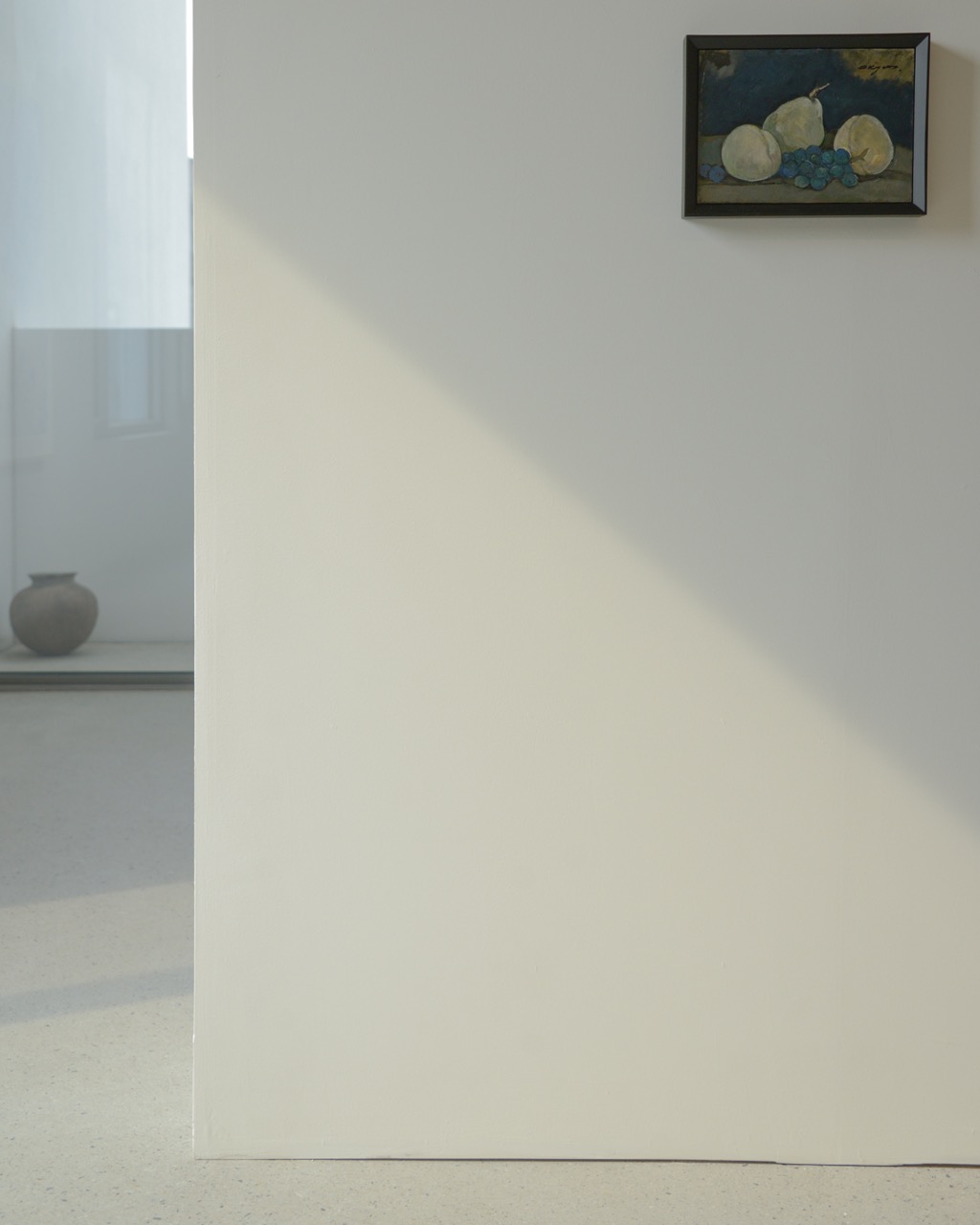
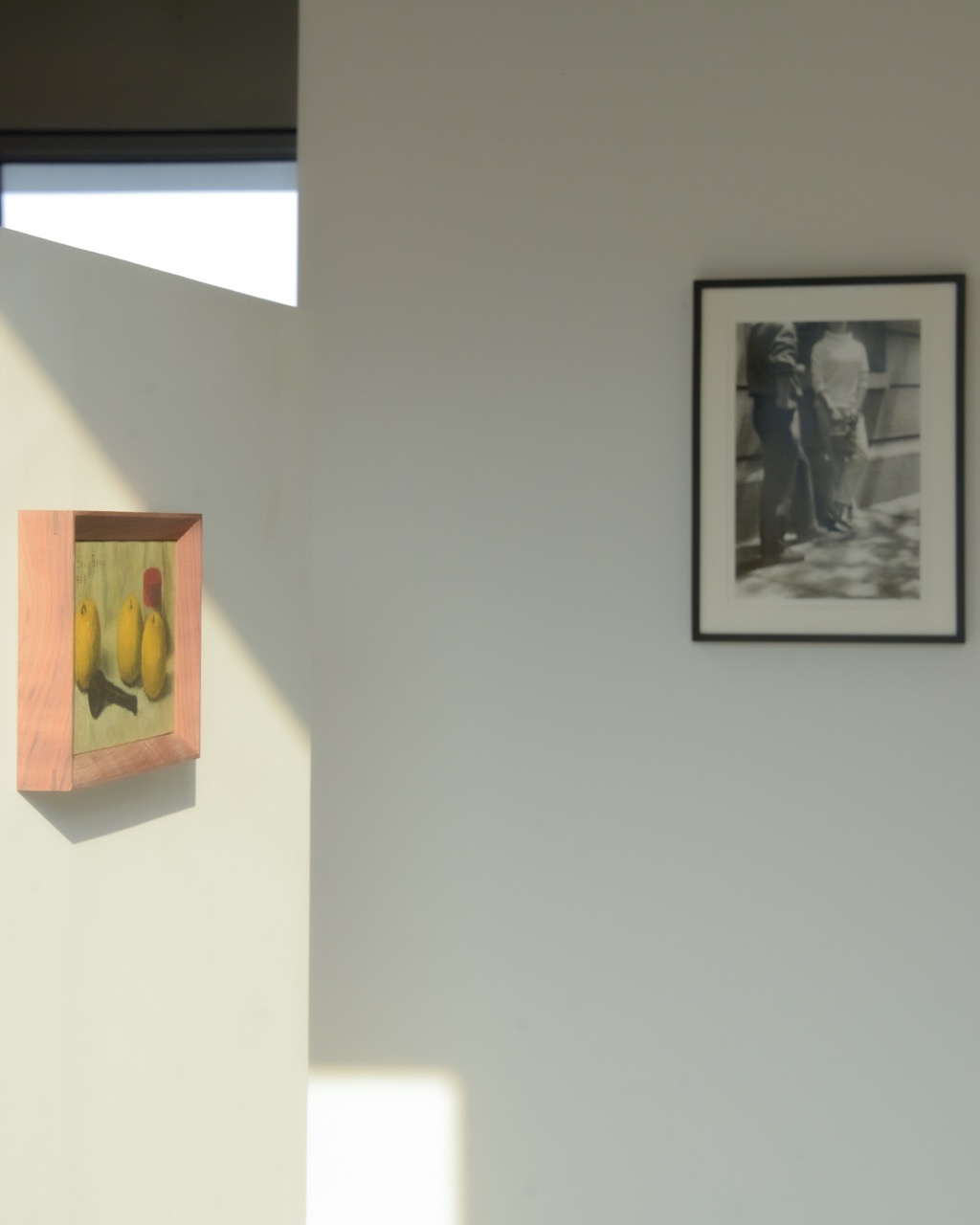
To Sang-bong, “Still Life”, oil on canvas, 1968
・ Kwon OkYon(b. 1923) He is an artist who, like Kim JongHak, holds the deepest affection for Korean traditional art. Despite having the appearance of a tiger, he focused on depicting young girls and beautiful landscapes. His distinctive somber indigo hues are a defining feature. He also pursued studies in France. Admiring Park SooKeun and being a distant relative of Kwon Jin-kyu... Although his composition and perspectives are similar to To SangBong's, the contrast of colors and materials adds an intriguing touch. ・ To SangBong(b. 1902) With a love for Moon jar akin to Kim Whanki, he became a master of ceramics. He primarily depicted still life using classical techniques, and his incredibly beautiful signature is instantly recognizable as his own. Some may consider his works aristocratic, but few artists can achieve such a level of visual perfection. His paintings captivate the viewers with their dreamy allure. ・ Anonymous This is a charming and endearing depiction of two small cats, believed to have been painted during the late Joseon or Korean Empire. It's an interesting anecdote that back then, there were hardly any depictions of cats in their rear view. Though the artist remains unknown, let us now appreciate the artwork before us. Despite its humble origins, the small cat painting exudes a delightful simplicity and a sense of coziness that resonates with viewers. Its quaint charm and warm playfulness continue to captivate, even after all these years.
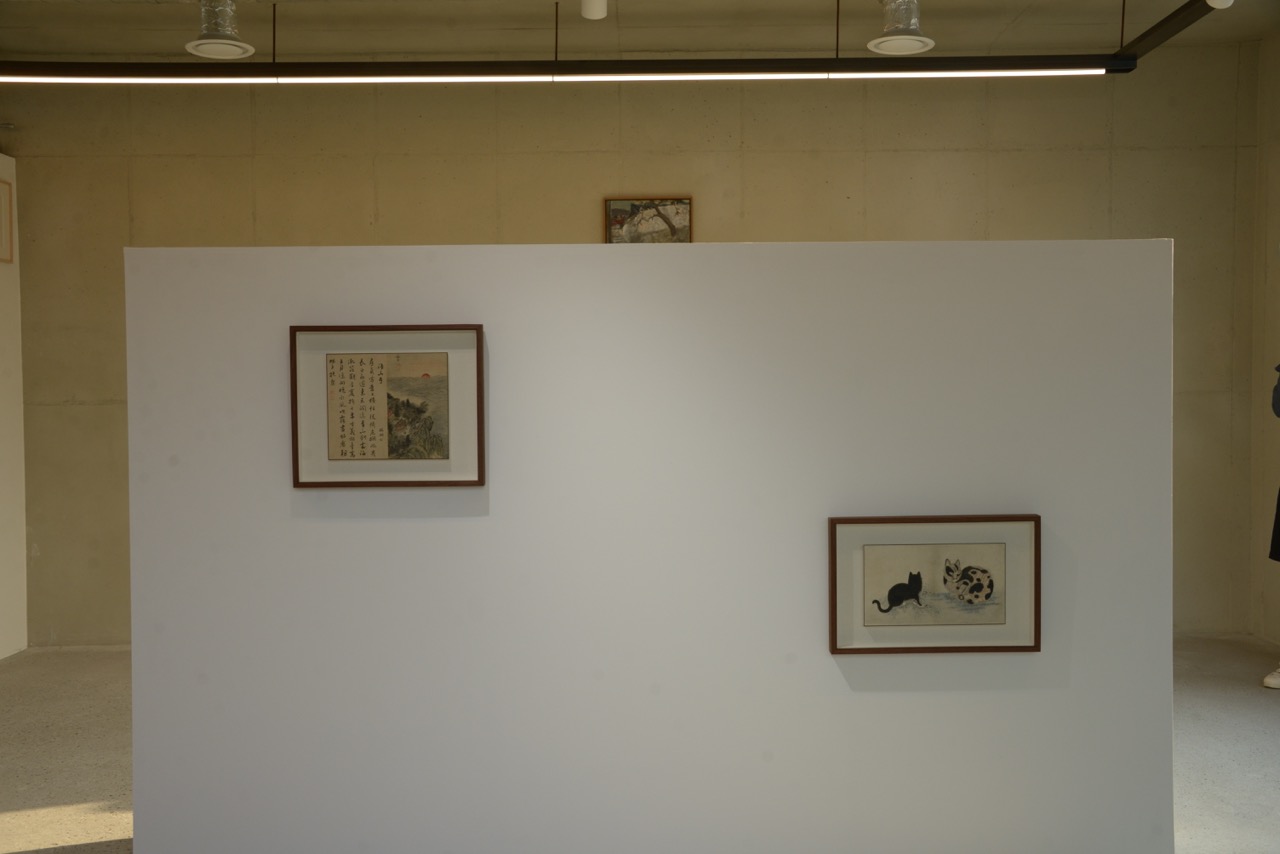
Anonymous, ﹤Cats﹥, ink and color on paper
・ GyeomJae JeongSun(b. 1676), Lee Gwangsa(b. 1705) In Yangyang, the renowned temple, Naksansa, collaborated with Lee Gwangsa, famous for his poems, to combine their writings and paintings. On the back of the painting, there are '五(meaning of 5th)', probably indicating the fifth collaboration between the two artists. The scholars sitting or standing together, engaged in conversation, are absolutely charming. The buildings of the now-vanished Naksansa can also be seen. Above all, Jeongseon's brushwork depicting the sea and the sun stands out. In the Joseon era, poetry and writing were intertwined with painting, forming a harmonious unity known as "si-seo-hwa (poem, calligraphy, painting) : Trinity" - where poetry became the essence of painting. Today, everything has become specialized and divided, with poets, painters, and authors each in their own realm!
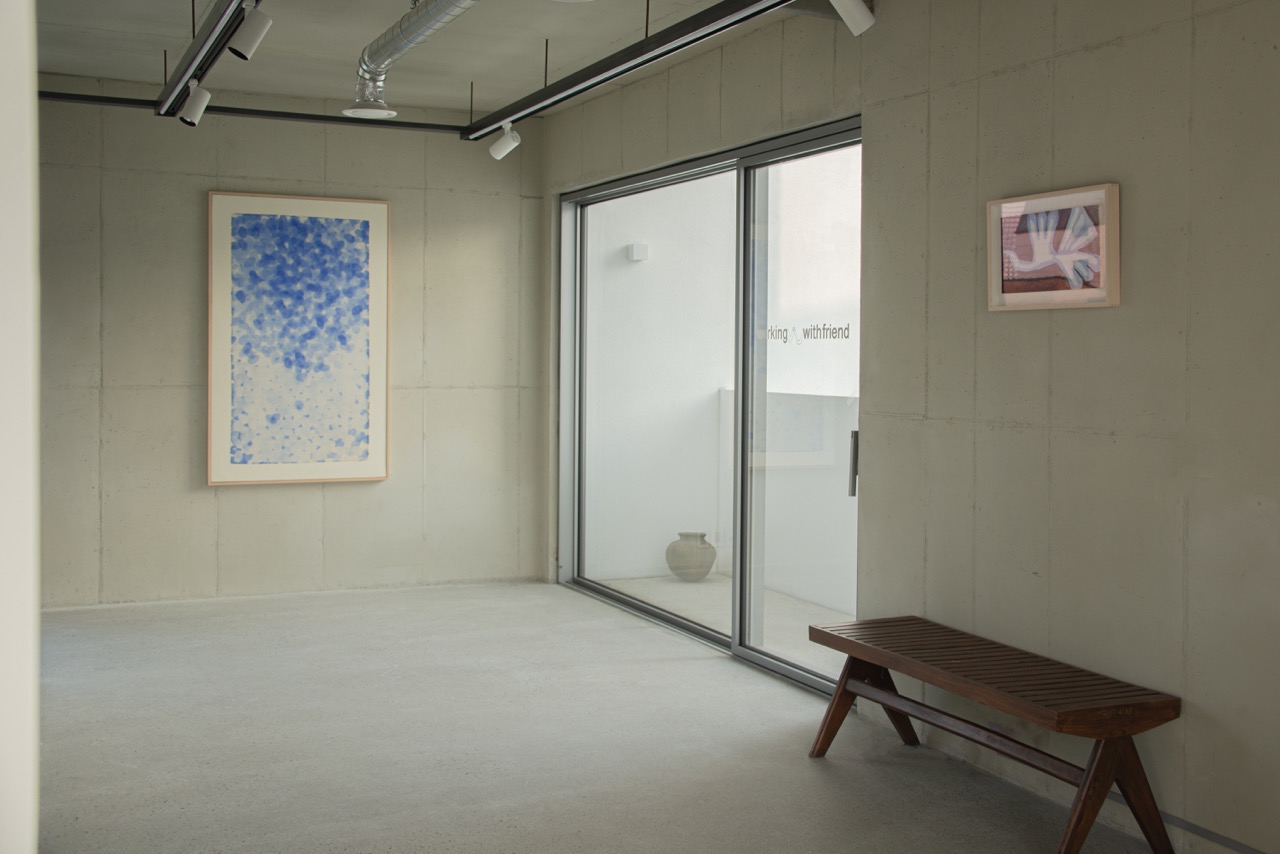
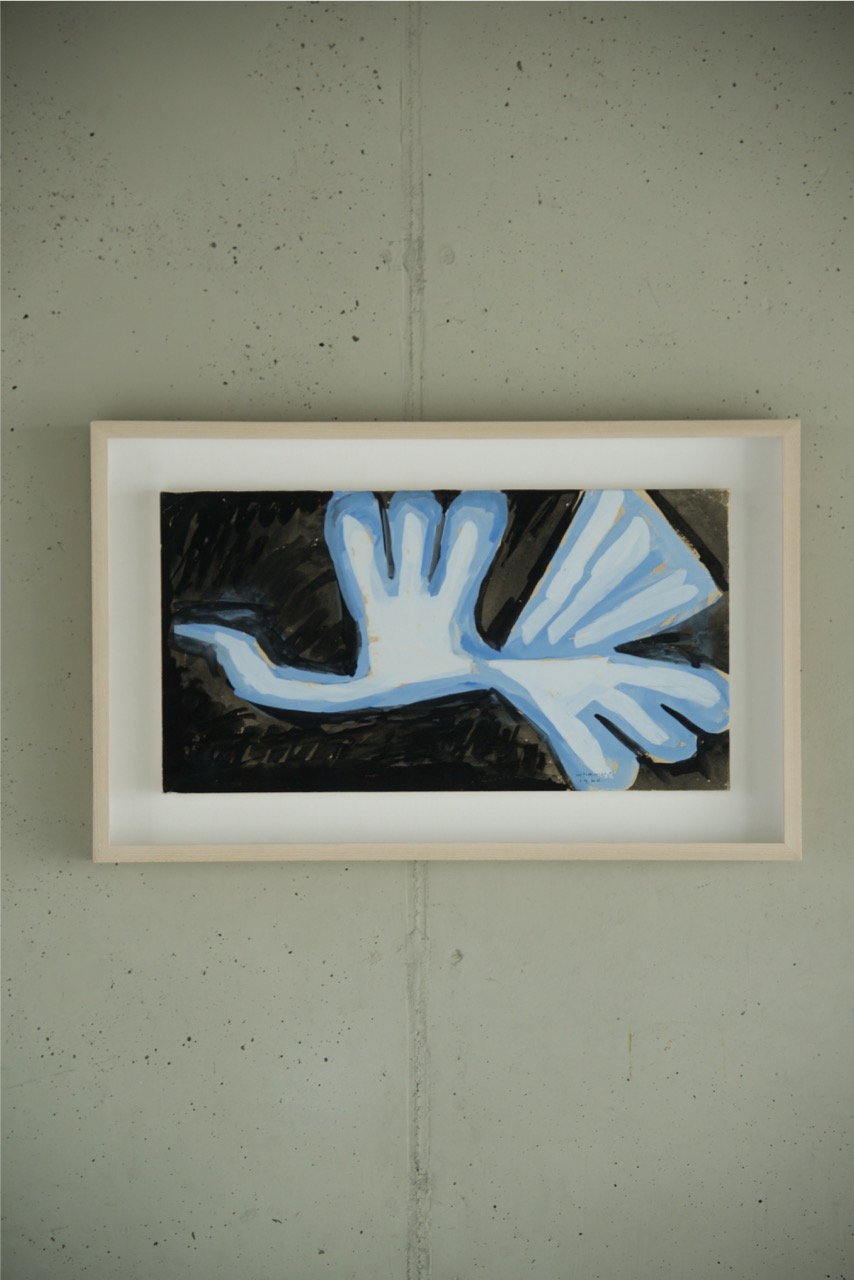
Kim Whanki, ﹤Bird﹥, gouache on paper, 1960
・ Quac InSik(b. 1919) A pioneering artist who delved into the essence of objects and applied it to art. While there are records suggesting he taught Lee Ufan the art of breaking stones, the truth remains uncertain. With a more significant presence in Japan than in Korea, he focused on experimental works that pushed the boundaries of conventional painting. One of his late masterpieces is the 'Chaemukhwa(ink and colored)' series, where he ingeniously used stones to create prints on paper, often collecting them from serene riverbanks. ・ Kim Whanki(b. 1913) One of the most famous painters in Korea, known for his high prices. He was prolific in writing and journaling, embodying a sense of literary spirit. He had deep friendships with intellectuals and writers. In the 1930s, while studying in Japan, he focused on abstract representations of nature, and in the 1970s in New York, he pioneered the unique technique of "dense dot painting." However, he passed away in 1974. Throughout his career, he used thick materials to depict nature, but towards the end, his style evolved into a delicate touch resembling ink seeping into paper. Considered one of the pioneers of the term "Moon Jar", he endeavored to infuse a modern and sophisticated sensibility into what might be seen as ambiguous aspects of Korean culture even in 2023. He frequently used the term "Whanki-Blue" due to his extensive use of blue colors. He was described as having a towering stature and a long neck, leading colleagues to affectionately call him "Crane (Red-crowned)", which might be another self-portrait. "To be truly global, shouldn't one embrace their national identity? Art feels like a powerful national song." "I decided not to sell my paintings. Perhaps because they wouldn't sell, or maybe I was determined not to. In any case, I resolved not to sell them."
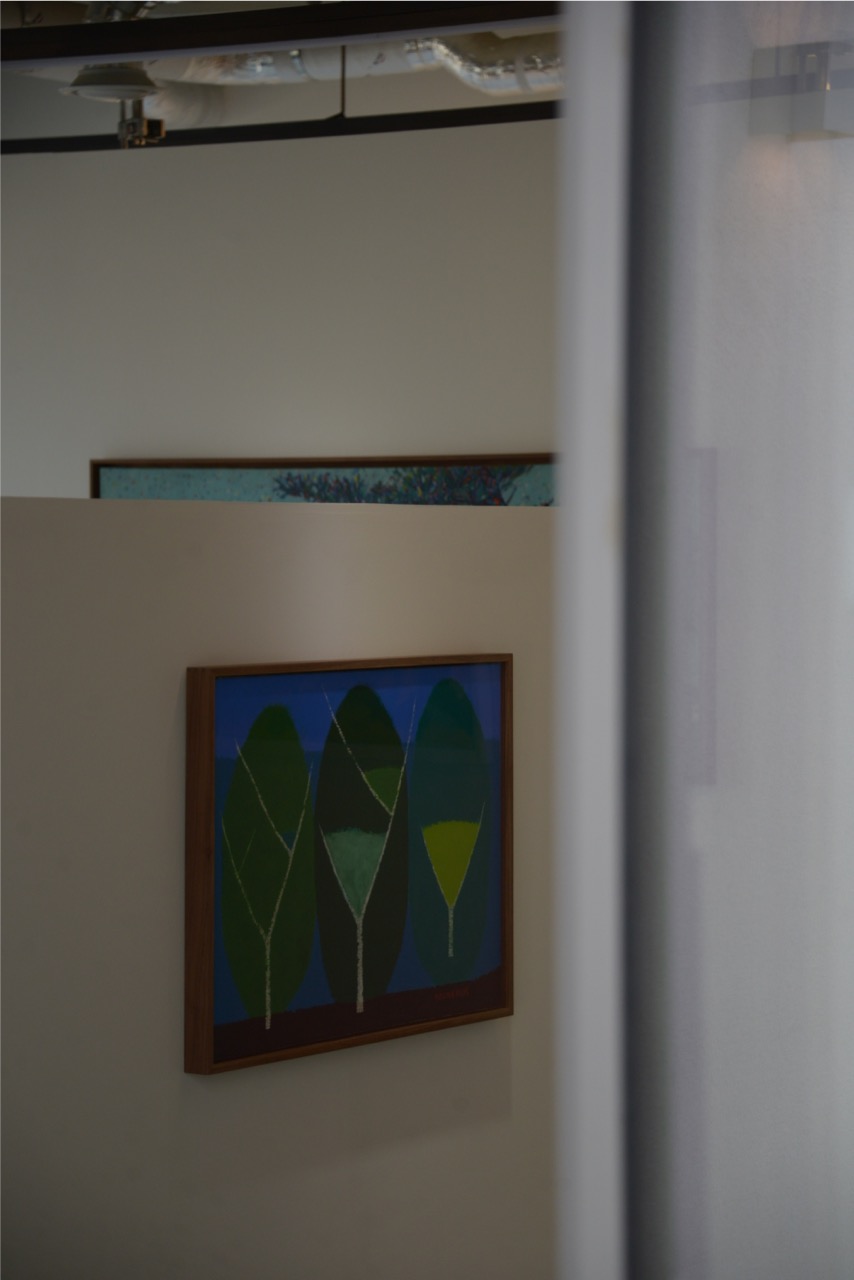
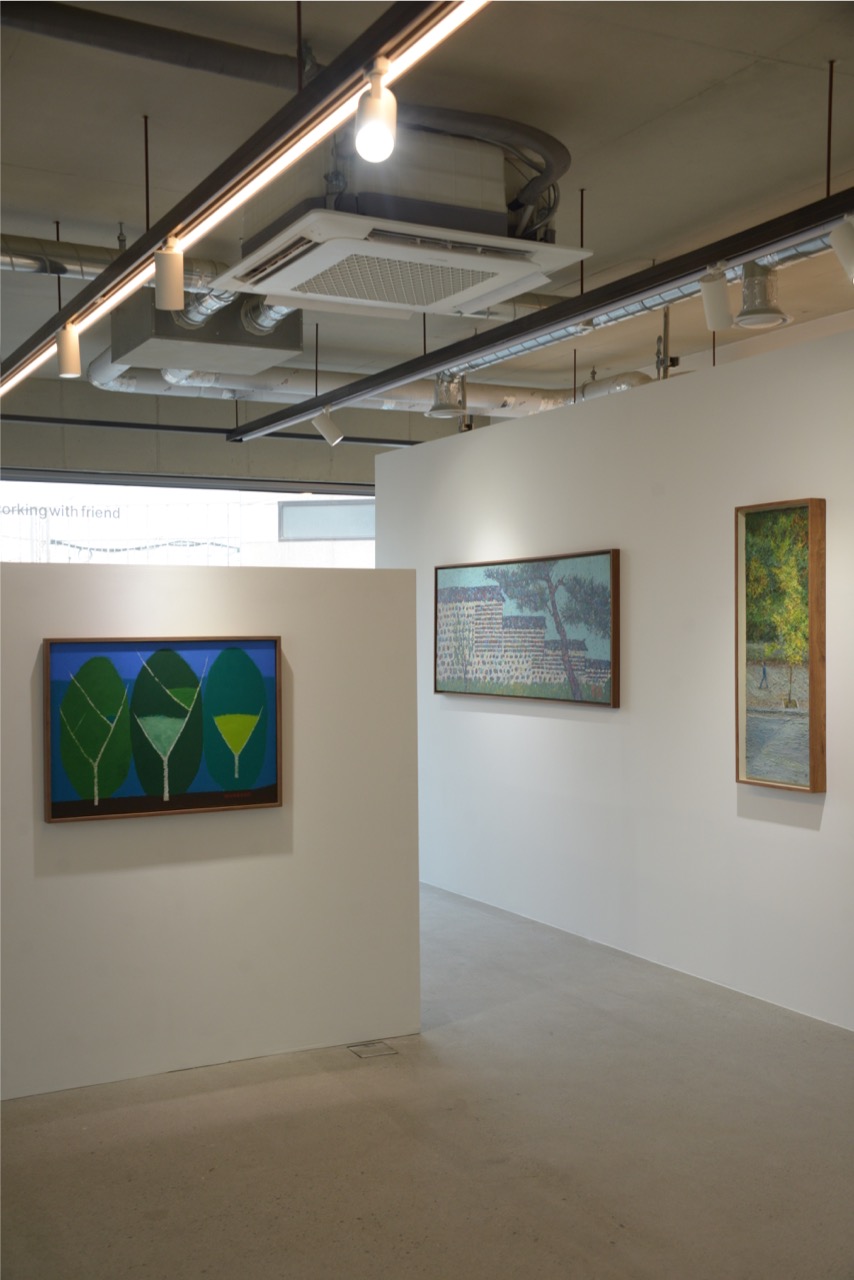
Oh Chikyun, ﹤Ginkgo Tree﹥, acrylic on canvas, 1997
Lee Daewon, ﹤Wall﹥, oil on canvas, 1976
・ Yoo Yongkuk(b. 1916) When people describe Yoo YoungKuk, they often refer to him as one of the two major peaks in "Korean abstract art", alongside Kim Whanki. While both were members of the Shin Sa-im-dang group, I believe their pursuits differ quite significantly. During he studying in Japan, Yoo YoungKuk pursued a rigorous and geometric composition with his own sense of pioneering, skillfully translating the forms of mountains and nature he saw in Uljin throughout his life into colors and geometry. His refined style is still unbelievable to witness. However, in this particular artwork, it features trees, not mountains. The juxtaposition with Yun Hyung Keun's column on the opposite side creates an intriguing contrast in form.
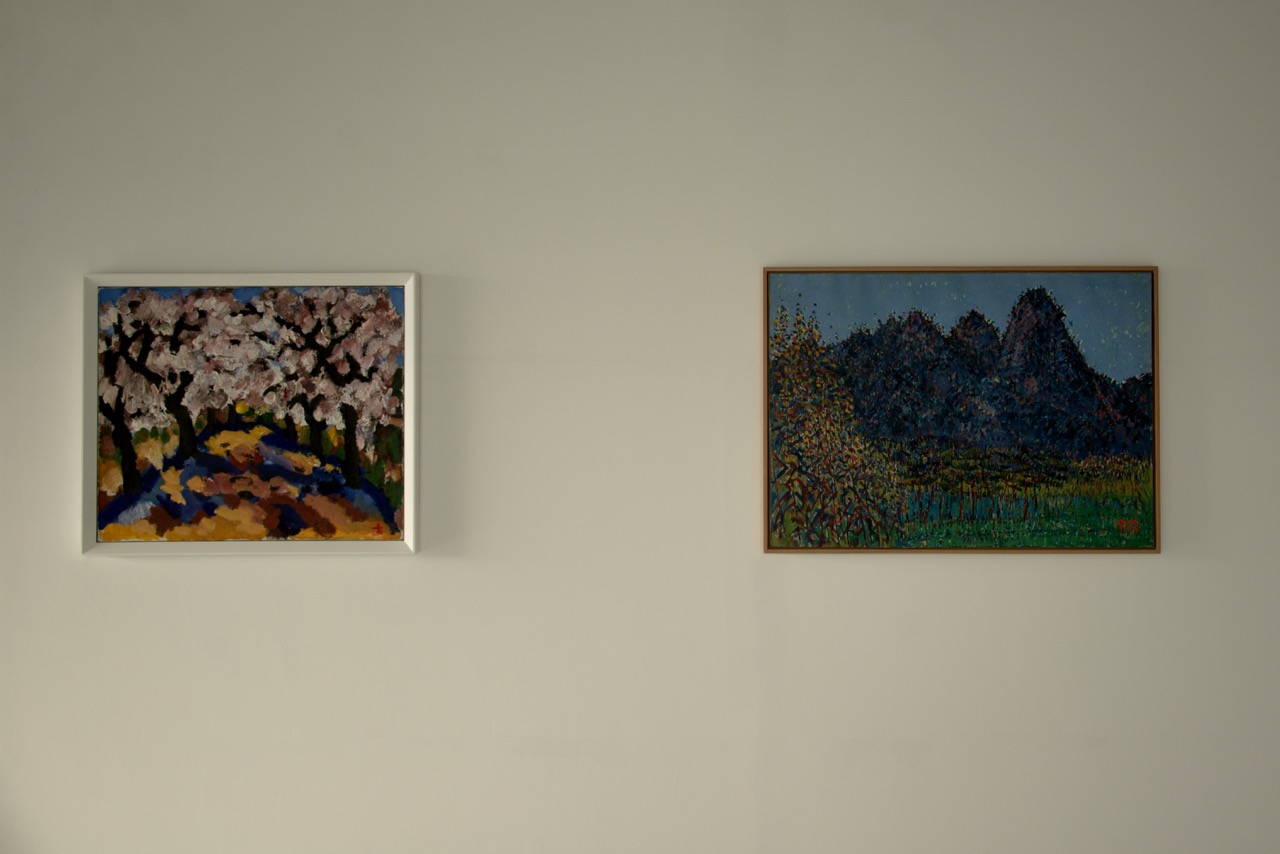
Lee Daewon, ﹤Mountain (Dobong)﹥, oil on canvas, 1973
・ Park KoSuk(b. 1917) A prominent figure in the essence of passionate brushwork, contrasting colors, and Korean expressionism. He particularly painted numerous landscapes of mountains. He left behind a relatively small number of artworks. He was also a close friend of Lee JungSeop and Hwang YeomSu. In some of his works, Ssanggyesa, a temple located in Hadong, South Korea, holds a special place as he depicted various scenes of the temple. Ssanggyesa is well-known for its cherry blossoms, and he often captured the spring when the cherry blossoms were in full bloom at the temple. ・ Oh Chikyun(b. 1956) He was a finger-painting artist "the impasto". Even this artwork was created with his fingers. His works rarely feature figures, perhaps due to their compositional stability, and instead show small, unrecognizable passersby. Hailing from a rural area in Chungcheongnam-do, he struggled to study abroad in New York during his youth but fell victim to a scam, enduring a prolonged period of poverty. As a result, his early New York paintings were starkly dark and despairing, in stark contrast to this particular work. However, as spring arrives, during the art market boom of the mid-2000s, his artwork values skyrocketed, and the front of galleries was teeming with people eager to acquire his paintings. On the other hand, after the 'Dansaekhwa (so-called Korean Monochrome painting)' trend took over in the 2010s, the market situation seems to have changed significantly. Nevertheless, his paintings remain deeply poetic and sincere. It seems to be an extraordinary state of being.
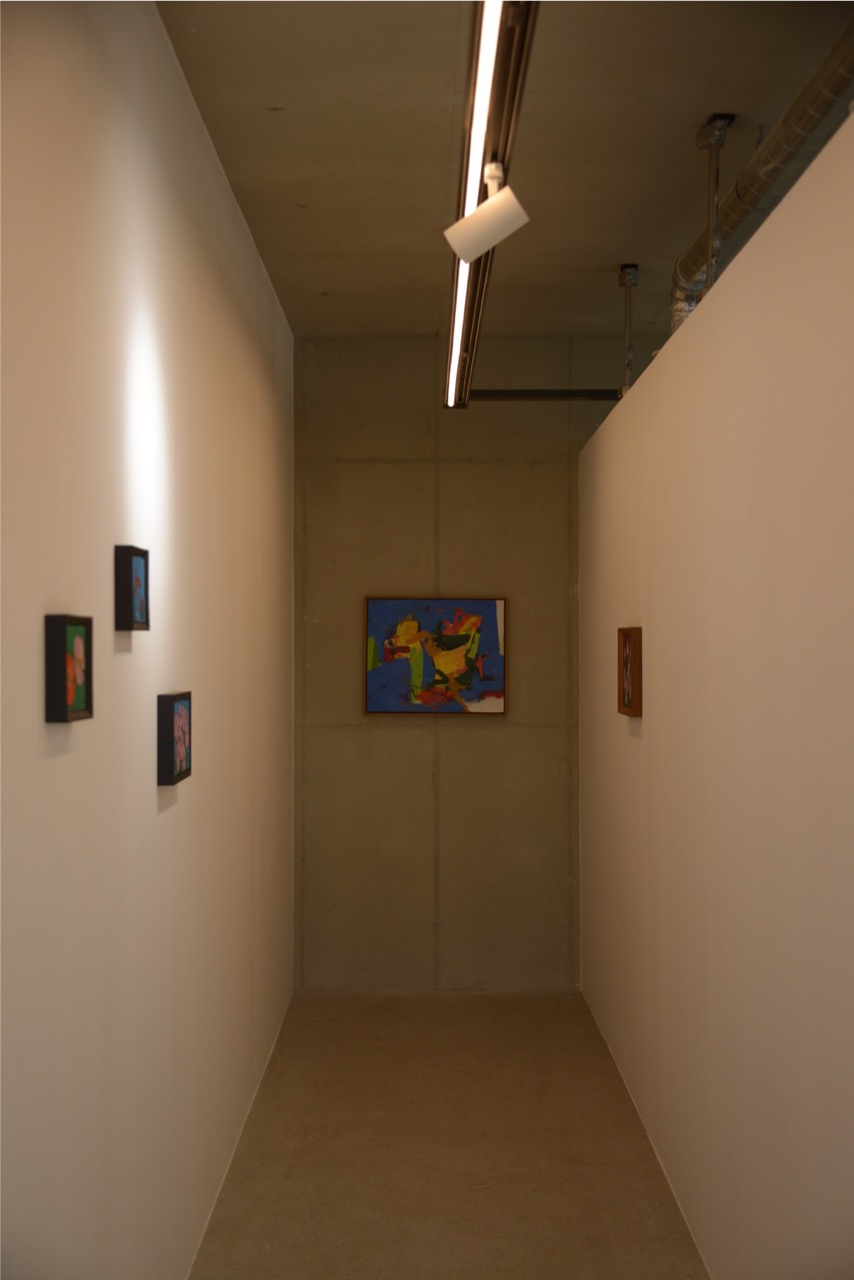
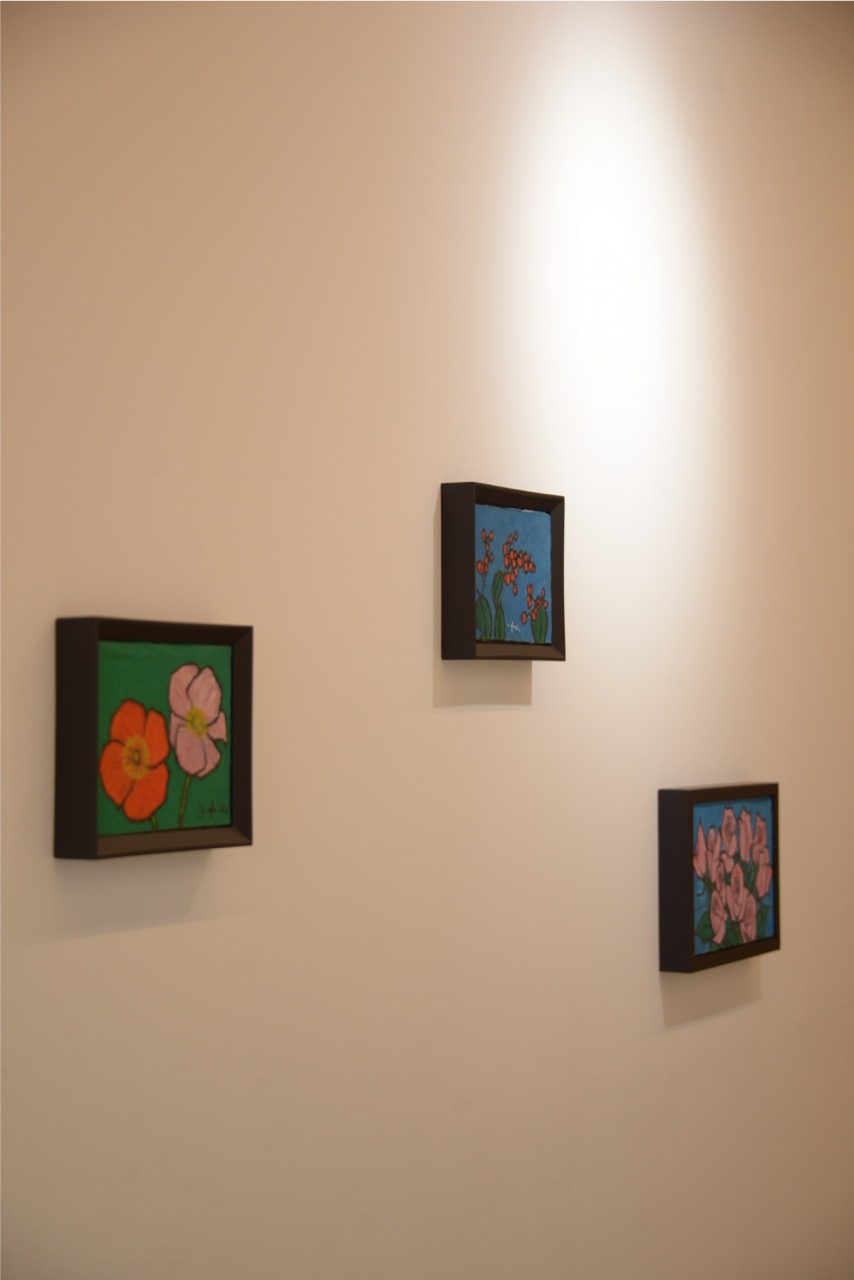
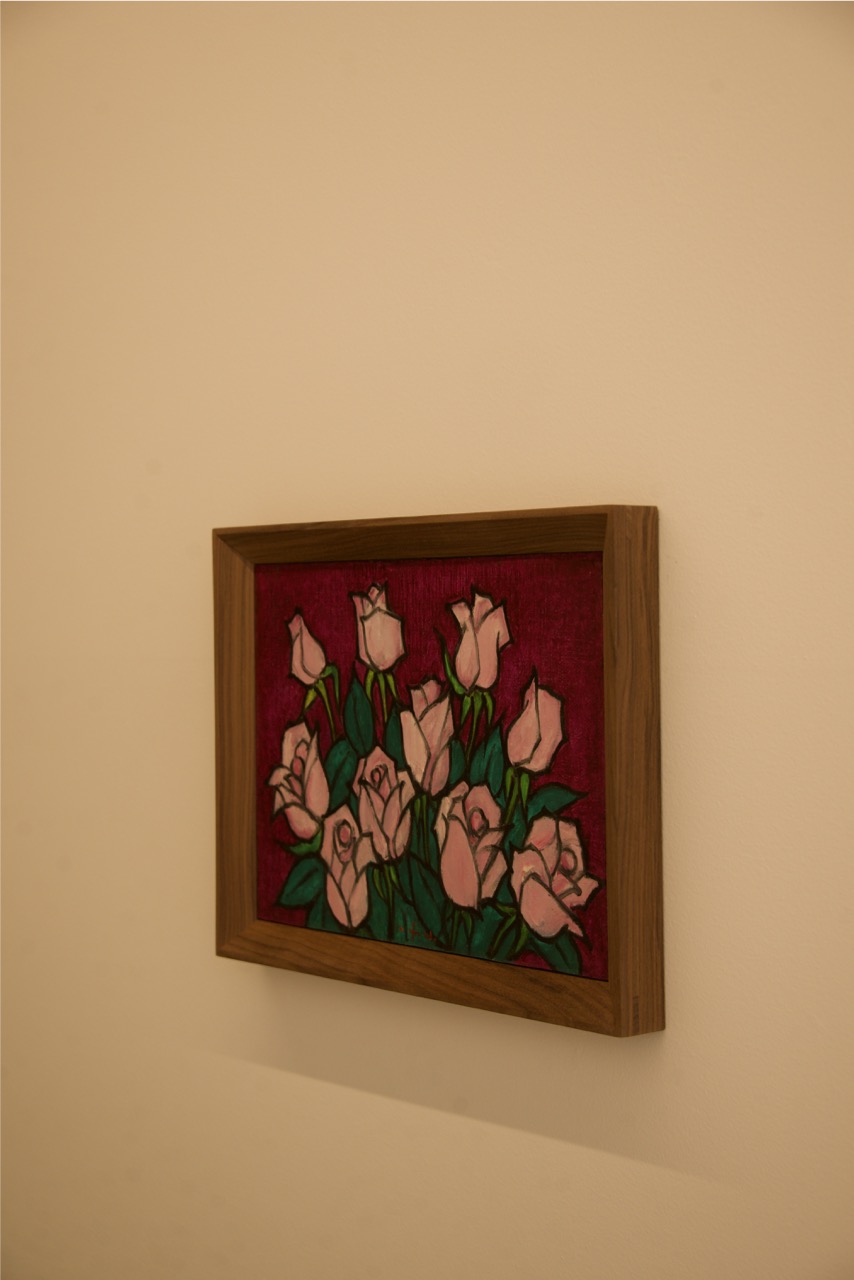
Hwang YeomSoo, <Poppy>, oil on canvas
Hwang YeomSoo, <Schisandra>, oil on board, ca.1954
Hwang YeomSoo, <Rose>, oil on canvas, 1977
Hwang YeomSoo, <Rose>, oil on canvas
・ Choi Wook-kyung(b. 1940) A female painter who studied abroad in the United States during the 1960s and 1970s. Abstract expressionism, Willem de Kooning, and Georgia O'Keeffe might come to mind. However, as a Korean, she found particular inspiration from Korean nature in her later works and depicted it. She also wrote a lot of poetry and prose, receiving considerable attention as a female painter during a challenging time for female artists in Korea. As a result, her artwork exudes not only vibrant colors but also a sense of anger and diverse inspirations she encountered in the United States, showcasing her love for nature. She often painted monumental works much larger than herself while perched on a ladder, enjoying a smoke. ・ Hwang YeomSoo(b. 1917) A close friend of Lee JungSeob and Park Kosuk, he painted many roses throughout his life. Despite his paintings sometimes appearing aristocratic, he lived a frugal and thrifty life. However, when it came to roses, he was said to spare no expense. What we should see is not just the roses themselves but the distant horizon beyond the roses. Although his paintings are often mistakenly associated with the preferences of noble ladies, there is a certain spirit that embodies the era. Perhaps what lies beyond the roses is what truly matters. When asked why he painted only roses, he simply replied, "They are subjects that I can change as I please." "I don't paint roses as they are. When I try to paint them exactly, other flowers keep popping up. The purpose of my paintings is not the concrete subject of roses but the 'collision' they create within my heart. Art's role is to depict something beyond the reality of roses."
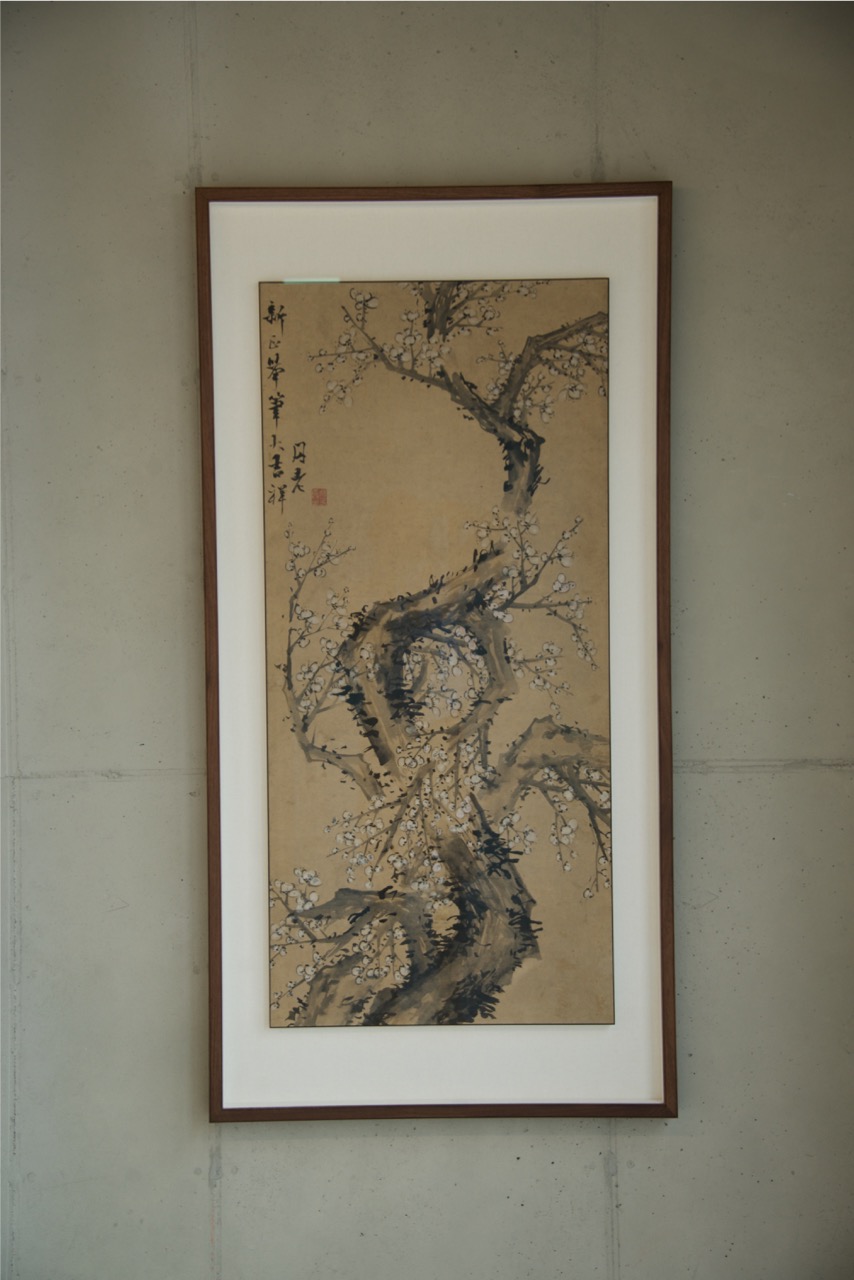
・ Cho Heeryong(b. 1789) Affectionately known as the "MaeSu(The elderly of Plum Blossom)" , Cho HeeRyong cherished the beauty of maehwa (plum blossoms) deeply. This painting showcases his heartfelt wishes for the New Year, gracefully capturing maehwa in both art and verse. As a disciple of the esteemed calligrapher Kim JeongHee during the late Joseon period, Cho HeeRyong's style diverged from his mentor's pursuit of the so-called "elegance in calligraphy" and "minimalistic refinement." It is said that he was resolute in his departure from Kim JeongHee's philosophy. While Kim JeongHee embraced a minimalist approach, Cho HeeRyong's maehwa exudes an opulent beauty akin to both clouds and dragons. Each embodies its own profound significance, making them equally compelling in their own right.
Yun Hyongkeun, <Umber﹣Blue>, Oil on linen, 1978
・ Yun Hyongkeun(b. 1928) A painter who battled with injustice throughout his life. He admired Kim Whanki and also became his son-in-law. In his early days (in the 1960s), his artistic style bore a striking resemblance to his semi-abstract works, but he managed to break free from the trials of his time and social constraints, succeeding as an artist. Using canvas and oil, his paintings evoke the essence of Korean ink paintings. Though known as the "silent painter", his black columns encapsulate the struggles and emotions he endured throughout his life. Although categorized as a 'Dansaekhwa (so-called Korean Monochrome painting)', his paintings are, in fact, a blend of "Umber", representing the earth, and "Blue", representing the sky (perhaps Kim Whanki's color), making it Umber Blue - not truly 'Dansaekhwa'. "I wonder if the void of youth will appear within my works. Escaping and surviving amid fear and anxiety were my most significant challenges." "I may have humble paintings, but I want to hang them on earthen walls. I want to draw whatever complements those earthen walls. No matter how time passes, what will forever be beautiful in this world are earth, wood, and stone."
